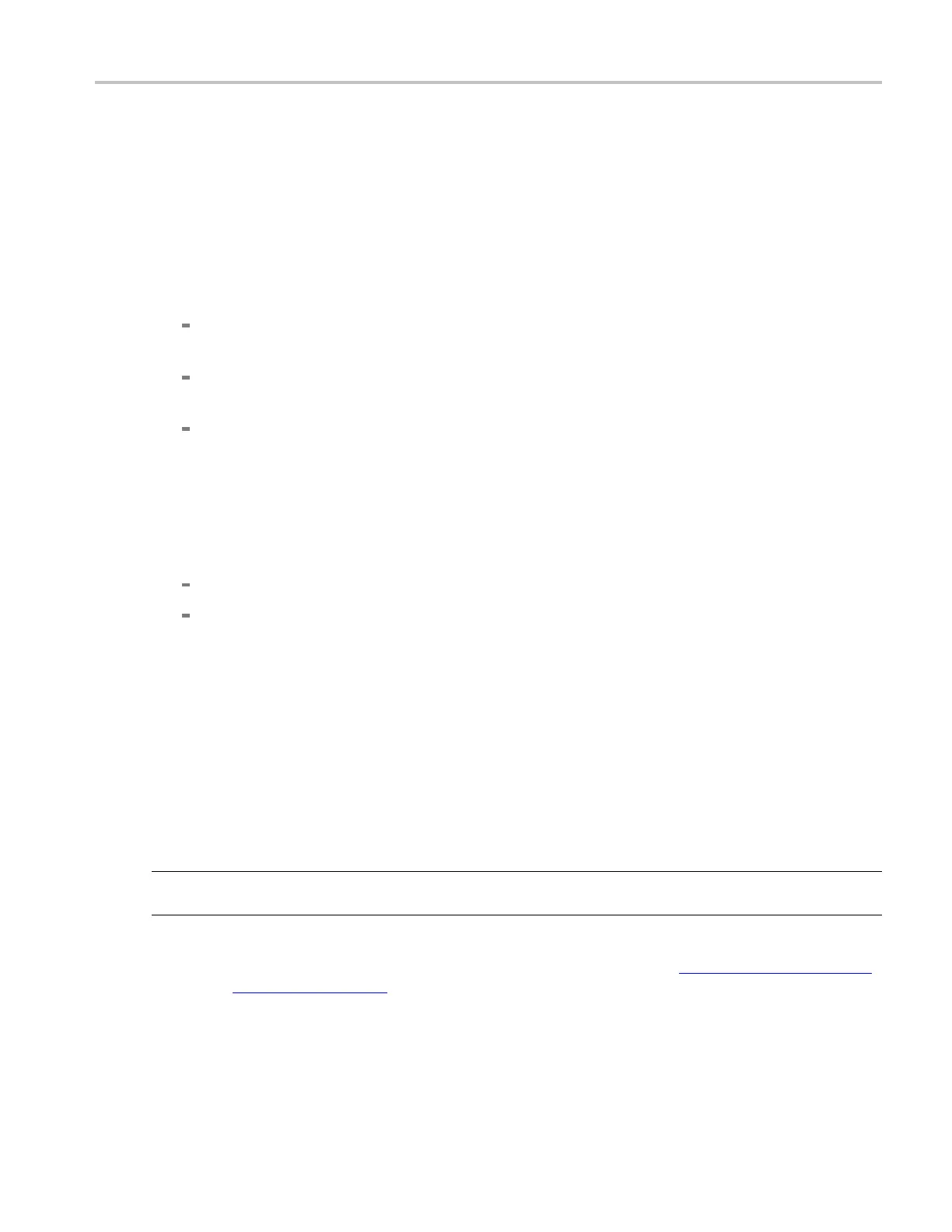How to ? Trigger on a runt pulse
1. Push the front-panel Advanced button.
2. In the Trigger control window, open the A Event tab.
3. Select Runt from the Trigger Type drop-down list.
4. Specify the trigger source. Click Source; then select a channel from the drop-down list.
5. Select a Pol
arity value to specify the direction of the runt pulse. Triggering occurs at the point the
pulse returns over the first threshold without crossing the second threshold level. The polarity selected
determines the order that the threshold must be crossed for a runt trigger to occur:
Pos. Looks at positive-going pulses. The lower threshold m ust be first crossed going positive, then
recrossed going negative without the upper threshold being crossed at all.
Neg. Looks at negative-going pulses. The upper threshold must b e first crossed going negative,
then recrossed going positive without the lower t hreshold being crossed at all.
Either. Looks at both positive and negative pulses. Either one of the thresholds must be first
crossed going in either direction, then recrossed going in the opposite direction without the other
threshold being crossed at all.
For all three polarity settings, triggering occurs at the point the runt pulse recrosses its first
threshold.
6. To qualify the runt pulse trigger, click Runt; then select from the drop-down list:
Occurs. Triggers on all runt pulses.
Wide
r. Triggers only on runt pulses that exceed the minimum width that you set. Enter the Width
using the multipurpose knob or pop-up keypad.
7. To s
et the threshold levels, click in the Upper Limit or Lower Limit entry boxes; then use the
multipurpose knobs or pop-up keypad to set the values.
8. Yo
u can also Trigger on a logic-qualified runt pulse using the Trigger if Runt "Logic" s election. When
the instrument detects that a runt condition has occurred, it checks the logical state of two other
available channels and triggers only if their conditions are met. Each channel c an have a value of high
(H), low (L), or "don't care" (X). A value is considered high if the channel input voltage is greater
than the specified threshold voltage; a value is considered low if the channel input voltage is less
than the specified threshold voltage. Use the "don't care" selection for any channels that will not be
used as part of the pattern.
TIP. To use the trigger level marker to help in setting the threshold levels, open the Display control window
Objects tab; then click Long to activate the marker.
9. You can set the mode and holdoff for all standard trigger types. Refer to trigger mode (see page 389)
and set holdoff (see page 474) to learn more about trigger mode and holdoff.
DSA/DPO70000D, MSO/DPO/DSA70000C, DPO7000C, and MSO/DPO5000 Series 645

